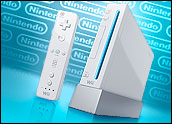
Part 1 of this two-part series looks at Nintendo’s transition from market leader to also-ran at the hands of rivals Sony and Microsoft, as well as Nintendo’s plan to regain the top spot with a new take on the controller interface.
Seven years ago, after the release of the Sony PlayStation 2 and the Microsoft Xbox, it seemed as though Nintendo, once a market leader, would never regain its No. 1 position. The GameCube, which sold a paltry 21.74 million units worldwide, had been a relative dud for the longtime gaming champion. However, undeterred by its third-place position, Nintendo had a plan for the next generation of gaming consoles.
Flash forward to 2008: Nintendo has sold some 32.64 million units of the Wii worldwide, according to video game sales tracking firm VG Chartz, giving it a 47.1 percent share of the video game hardware market.
The Xbox 360, which had a one-year head start on the Wii and PlayStation3 (PS3) with its November 2005 release, trails by nearly 11 million units, with 21.01 million sold and a 30.3 percent market share. Sony and its PS3 console come in third, with sales of 15.62 million units, earning just 22.5 percent of the hardware segment.
Now, nearly two years after the Wii launched, the console appears to be the clear market leader.
“The Wii is the winner. The others won’t catch up unless we measure over a 10-year period,” Michael Pachter, a Wedbush Morgan analyst, told the E-Commerce Times.
Cumulative sales of the Wii will grow some 142 percent to 46.7 million by the end of 2008 and reach 83.6 million by 2012, accounting for 44 percent of the console hardware market, according to a recent report from the Yankee Group. Sony will command the No. 2 spot: 61.1 million units in predicted sales four years from now, giving it 32 percent of the market. Microsoft is expected to sell 45.3 million units.
“In the current generation, the Wii is easily the winner in terms of console sales, though the Xbox still leads in secondary attached revenue,” Rob Enderle, principal analyst the Enderle Group, told the E-Commerce Times.
Hit Parade
The 23 months since the Wii became available have been the best in Nintendo’s history, according to the Yankee Group.
Its success has been driven by a lineup of very popular but mostly first-party games, including new titles under staple franchises like “Mario Bros.” and “Zelda.” Other hits include “Wii Sports,” which ships with the Wii console itself, and “Wii Fit.”
Factors driving the console’s sales include the easy playability of many of the games — learning how to play doesn’t involve a steep learning curve. Sociability is also important: The games allow multiple players to interact at the same time.
Price is also a consideration. At launch, the Wii cost US$250. The Xbox 360 and the PS3 launched with price tags ranging between $400 and $600. The latter two companies focused on designing a device that would be capable of playing DVDs and could take full advantage of high-definition TVs.
In the case of the PS3, the launch was hampered by a conspicuous lack of game titles, as developers struggled to create games powered by the PS3’s Cell processor.
“Both the PS3 and Xbox really went down a different path, which, in hindsight, wasn’t as smart,” Enderle said. “The media capabilities both embraced were best used in the living room, but the games were best with individual players, and thus belonged in the bedroom. This gave both systems an ugly split identity which, coupled with a high price and a lack of great titles, really hurt the PS3, knocking Sony out of first and back to a distant third in the market.”
Cannibalizing the PS2
With an installed base of some 140 million PS2 owners, Sony carried a heavy weight of high expectations as it moved on to the PS3. The success of the Wii has come at the expense of Sony. Although much has been made of the Wii’s ability to expand the marketplace, the console’s core audience is still hardcore gamers, according to Michael Goodman, an independent gaming and digital media analyst.
“The vast majority of their market is still core gamers,” he told the E-Commerce Times. “They love to do stories about the Wii in old folks homes, but there’s not enough old folks homes to move the needle a percentage point. For them to succeed, they have to capture the core gaming market, and that’s what they’ve done.”
It’s a combination of things that Nintendo did right and Sony did wrong — a mixture of pricing, controllers and fun games, Goodman pointed out.
“They’ve done a lot of things right — and on the flip side, the competition shot themselves in the foot. If Sony had come out with a reasonably priced console, a strong lineup of games, and hadn’t been so fixated on Blu-ray, then maybe they would have done better. But they didn’t. And even though they’ve brought the price down, they’re still priced too high for the mass market,” he maintained.
Challenges Down the Road
Though the Wii is comfortably seated in first place among its two biggest rivals, there could be trouble down the road for the platform. The game titles that have sold the best on the console are first-party games — those developed by Nintendo in-house.
“First-party titles have been more successful, primarily because Nintendo has such a large list of established game franchises. ‘Guitar Hero’ is catching up, but ‘Mario,’ ‘Zelda,’ ‘Metroid’ and ‘Smash Bros.’ games are way ahead of any third-party titles,” said Pachter.
Also, the attach rate for new third-party games on the Wii has not been good, Enderle said.
“The system is very popular, but the games it is good at are limited to a few that folks seem not to get that tired of — mostly first-party titles overall,” he pointed out.
Nintendo’s heavy reliance on its own franchises and in-house game development could be a problem as the platform ages, according to Enderle.
“Eventually, yes, once the system reaches saturation, this will be a problem for the platform,” he said.
The issue with the Wii and third-party titles evolved over several stages, Goodman explained.
Initially, developers did not support the Wii as strongly as they did the other platforms, but when they realized how successful the Wii had become, they changed their tune. However, their efforts to attach their games to the Wii platform often resulted in awkward gameplay due to the fundamentally different nature of the Wii’s controller interface.
“There are two paths ahead,” Goodman said. “One path says it has been a development issue, and when we get the second, third, fourth generation of titles for the Wii, it will really sing. The other path says Nintendo gamers just don’t care about third-party games and are just not going to buy them.”
Games such as “Star Wars: The Force Unleashed,” for example, could get the third-party title ball rolling, said Goodman. However, “one game is not going to make or break support for the Wii.”
If publishers do not begin designing good games for the Wii — either because of the challenges of developing for the console or because they don’t see enough profit in it — it could signal a decline for the Wii.
“In the long run, they will have to have third-party support. That’s the dark cloud looming on the horizon for Nintendo. There are things that can change the dynamics; however, they deserve significant credit for where they are today. They are certainly going gangbusters — and while I think there are potential roadblocks they have to overcome, those roadblocks have not sprung up at this point,” Goodman observed.
It’s possible, though, that third-party publishers will be ready to fill the void.
“Over time, Wii owners will want to play the same games as everyone else,” said Pachter, “and publishers will accommodate. So I don’t see it as a long-term problem.”

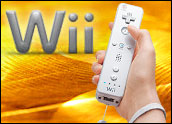


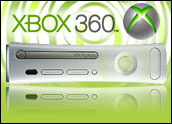
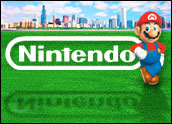

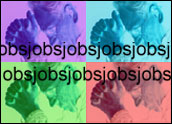
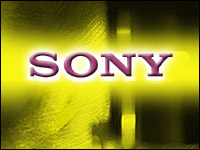



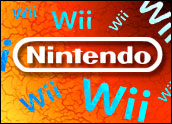

































Social Media
See all Social Media